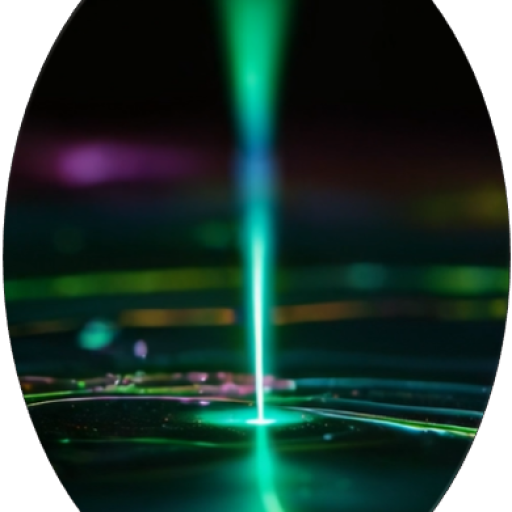Precision in Motion
As direct-write methods, FEBID and FIBID, have unlocked new possibilities in the design and fabrication of micro-robotics and nanoscale actuators. These techniques enable the direct creation of multi-functional 3D structures with nanoscale precision, seamlessly integrating mechanical, electrical, optical and magnetic components into compact systems. Their unique ability to bridge Nano-Electro-Mechanical Systems (NEMS) / Micro-Electro-Mechanical Systems (MEMS) makes them a high-potential candidate for applications requiring high precision, miniaturization and fabrication on virtually any given surface. Key applications include:
- 3D Micro-Swimmers: Magnetically actuated helical robots for biomedical applications.
- Flexible Actuators: Freeform structures for controlled micro-motion.
- Grippers: Multi-functional micro-grippers for nanoscale manipulation.
A notable example is the demonstration of solely magnetically driven actuators fabricated via FEBID. These actuators exhibit precise and controllable motion, leveraging nanoscale magnetic properties for applications in micro-robotics, biomedical systems and nanoelectronics. The design freedom provided by direct-write methods enables the integration of functional elements into complex architectures, pushing the boundaries of precision motion at the microscale. Direct-write methods enable the integration of magnetic materials like cobalt into complex helical designs with diameters below 200 nm, offering precise control over motion. These devices are particularly relevant for biomedical applications, environmental monitoring, and lab-on-a-chip systems as the achievable scale is key to go the next step in downscaling micro-robotics. that not only address existing challenges but also set the stage for the next generation of optical and photonic innovations.
Literature
Living up to its Potential – Direct-Write Nanofabrication with Focused Electron Beams; M. Huth, F. Porrati, S. Barth; J. Appl. Phys. (2021), 130, 170901.
Remote Magnetomechanical Nanoactuation; P. Vavassori et al.; Small (2016), 12(8), 1013.
New Design of Operational MEMS Bridges for Measurements of Properties of FEBID-Based Nanostructures; B. Pruchnik et al.; Beilstein J. Nanotechnol. (2024), 15, 1273.
Improvement of MEMS Thermomechanical Actuation Efficiency by Focused Ion Beam-Induced Deposition; B. Pruchnik et al.; J. Microelectromech. Syst. (2024), 33(3), 362.
Mass Sensing for the Advanced Fabrication of Nanomechanical Resonators; G. Gruber et al.; Nano Lett. (2019), 19, 10, 6987.
Tunable 3D Nanoresonators for Gas-Sensing Applications; G. Arnold et al.; Adv. Funct. Mater. (2018), 28, 1707387.
One-Dimensional Nanomaterials in Resistive Gas Sensor: From Material Design to Application; Z. Wang et al.; Chemosensors (2021), 9(8), 198.
